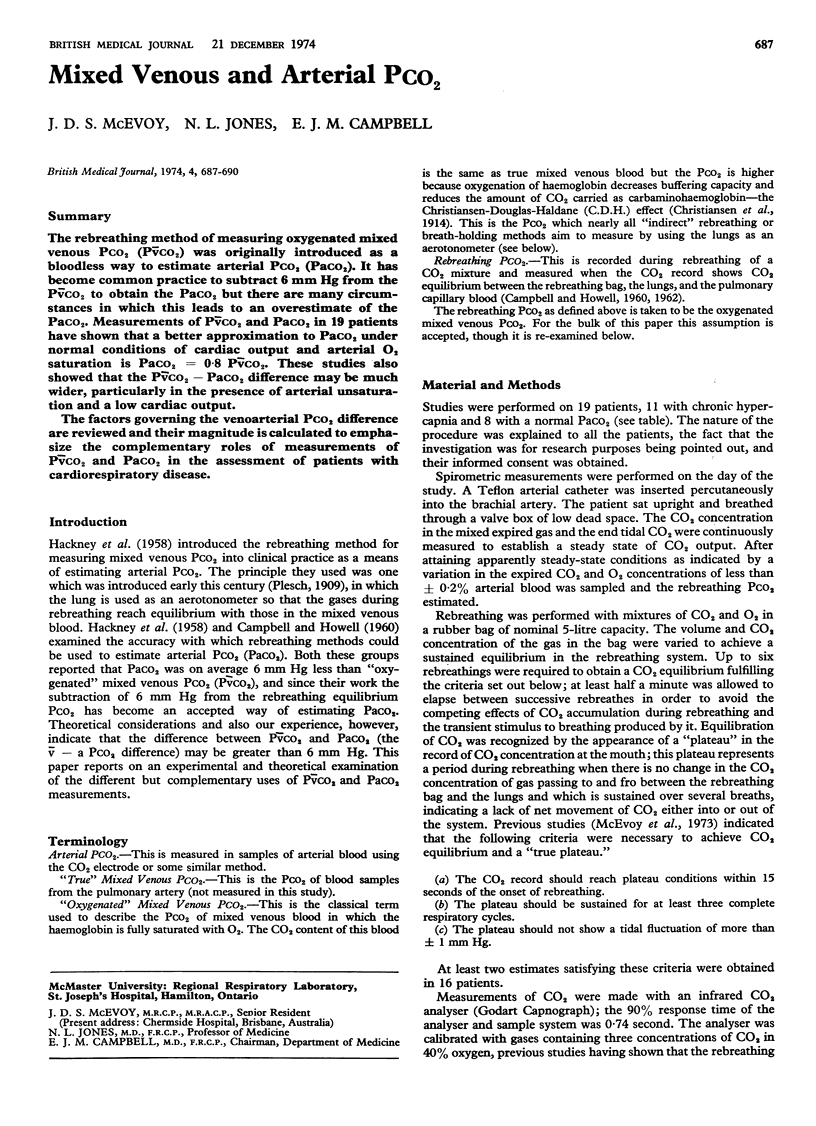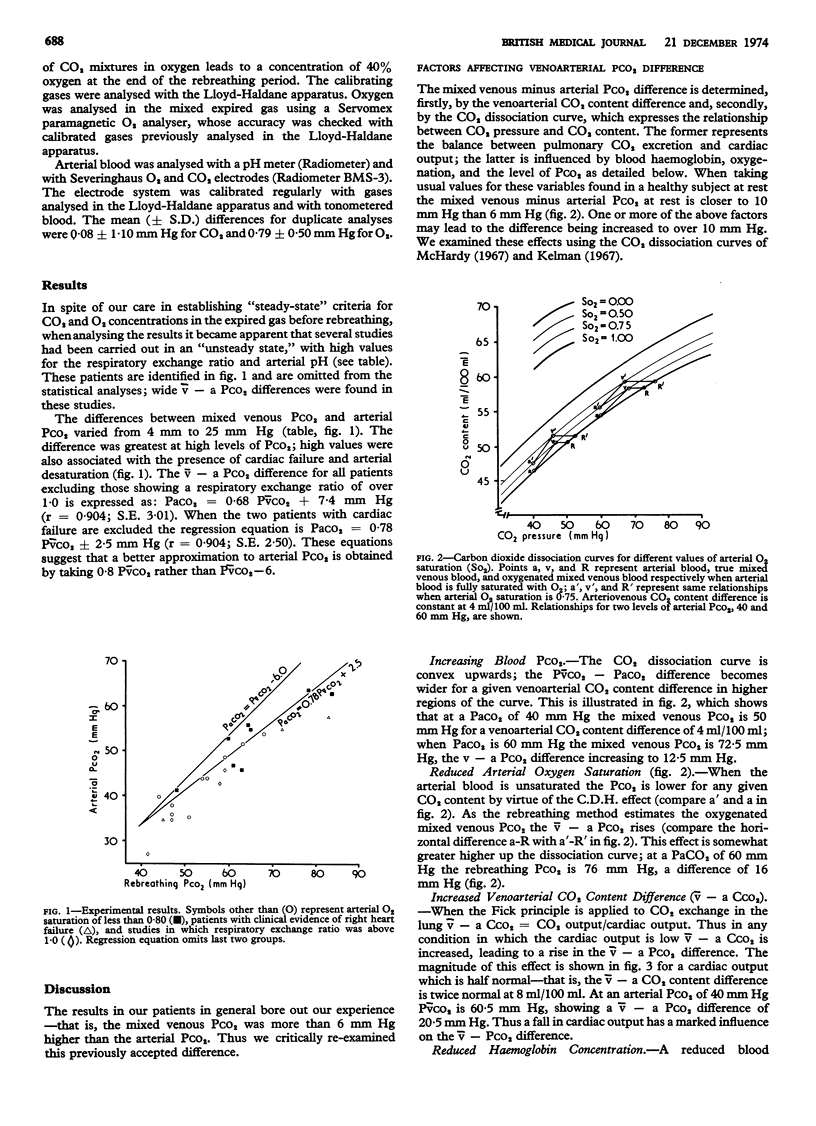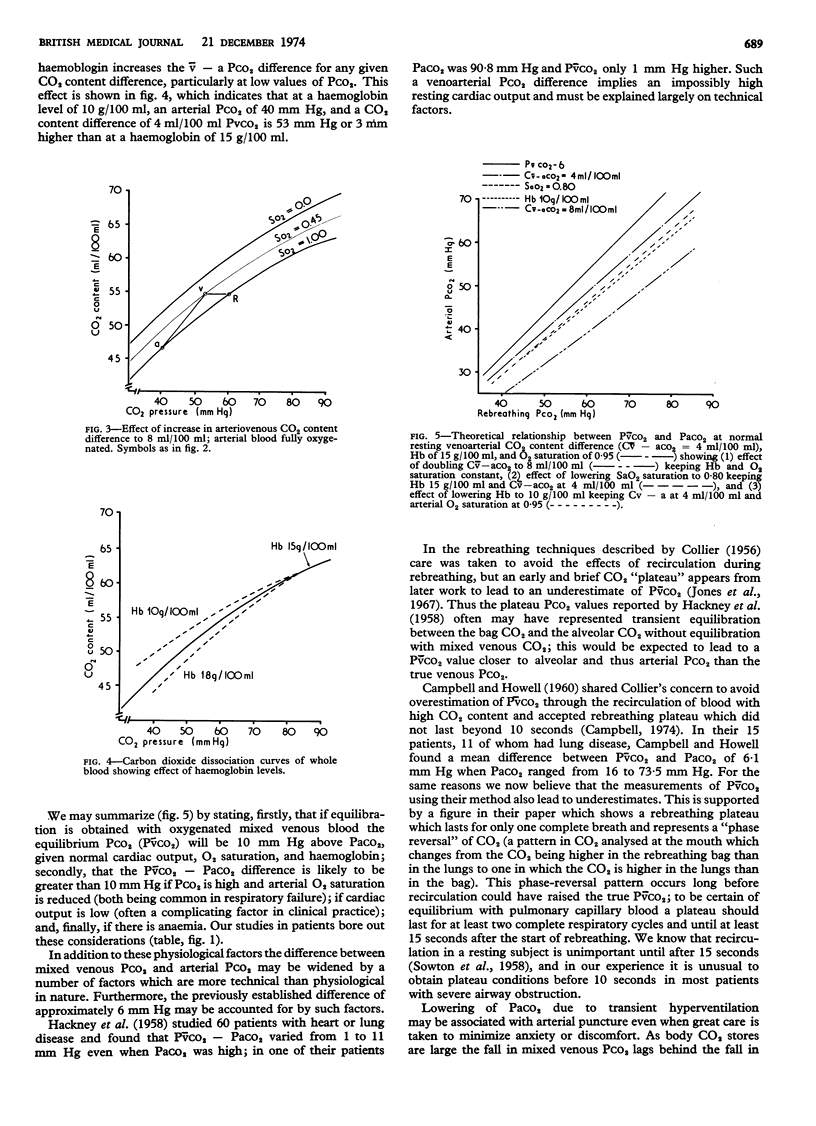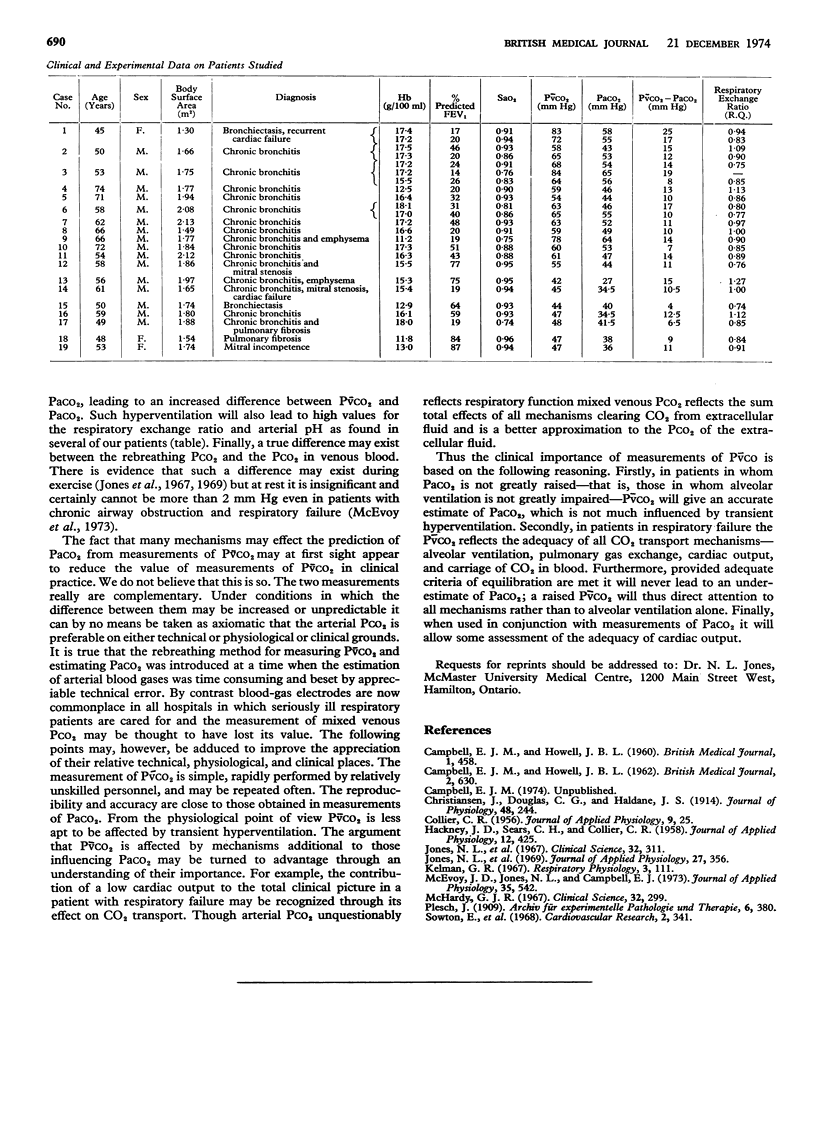Abstract
The rebreathing method of measuring oxygenated mixed venous Pco2 (Pv̄co2) was originally introduced as a bloodless way to estimate arterial Pco2 (Paco2). It has become common practice to subtract 6 mm Hg from the Pv̄co2 to obtain the Paco2 but there are many circumstances in which this leads to an overestimate of the Paco2. Measurements of Pv̄co2 and Paco2 in 19 patients have shown that a better approximation to Paco2 under normal conditions of cardiac output and arterial O2 saturation is Paco2 = 0·8 Pv̄co2. These studies also showed that the Pv̄co2 — Paco2 difference may be much wider, particularly in the presence of arterial unsaturation and a low cardiac output.
The factors governing the venoarterial Pco2 difference are reviewed and their magnitude is calculated to emphasize the complementary roles of measurements of Pv̄co2 and Paco2 in the assessment of patients with cardiorespiratory disease.
Full text
PDF



Selected References
These references are in PubMed. This may not be the complete list of references from this article.
- CAMPBELL E. J., HOWELL J. B. Rebreathing method for measurement of mixed venous PCO2. Br Med J. 1962 Sep 8;2(5305):630–633. doi: 10.1136/bmj.2.5305.630. [DOI] [PMC free article] [PubMed] [Google Scholar]
- CAMPBELL E. J., HOWELL J. B. Simple rapid methods of estimating arterial and mixed venous pCO2. Br Med J. 1960 Feb 13;1(5171):458–462. doi: 10.1136/bmj.1.5171.458. [DOI] [PMC free article] [PubMed] [Google Scholar]
- Christiansen J., Douglas C. G., Haldane J. S. The absorption and dissociation of carbon dioxide by human blood. J Physiol. 1914 Jul 14;48(4):244–271. doi: 10.1113/jphysiol.1914.sp001659. [DOI] [PMC free article] [PubMed] [Google Scholar]
- HACKNEY J. D., SEARS C. H., COLLIER C. R. Estimation of arterial CO2 tension by rebreathing technique. J Appl Physiol. 1958 May;12(3):425–430. doi: 10.1152/jappl.1958.12.3.425. [DOI] [PubMed] [Google Scholar]
- Jones N. L., Campbell E. J., Edwards R. H., Wilkoff W. G. Alveolar-to-blood PCO2 difference during rebreathing in exercise. J Appl Physiol. 1969 Sep;27(3):356–360. doi: 10.1152/jappl.1969.27.3.356. [DOI] [PubMed] [Google Scholar]
- Jones N. L., Campbell E. J., McHardy G. J., Higgs B. E., Clode M. The estimation of carbon dioxide pressure of mixed venous blood during exercise. Clin Sci. 1967 Apr;32(2):311–327. [PubMed] [Google Scholar]
- Kelman G. R. Digital computer procedure for the conversion of PCO2 into blood CO2 content. Respir Physiol. 1967 Aug;3(1):111–115. doi: 10.1016/0034-5687(67)90028-x. [DOI] [PubMed] [Google Scholar]
- McEvoy J. D., Jones N. L., Campbell E. J. Alveolar-arterial PCO2 difference during rebreathing in patients with chronic hypercapnia. J Appl Physiol. 1973 Oct;35(4):542–545. doi: 10.1152/jappl.1973.35.4.542. [DOI] [PubMed] [Google Scholar]
- McHardy G. J. The relationship between the differences in pressure and content of carbon dioxide in arterial and venous blood. Clin Sci. 1967 Apr;32(2):299–309. [PubMed] [Google Scholar]
- Sowton E., Bloomfield D., Jones N. L., Higgs B. E., Campbell E. J. Recirculation time during exercise. Cardiovasc Res. 1968 Oct;2(4):341–345. doi: 10.1093/cvr/2.4.341. [DOI] [PubMed] [Google Scholar]


